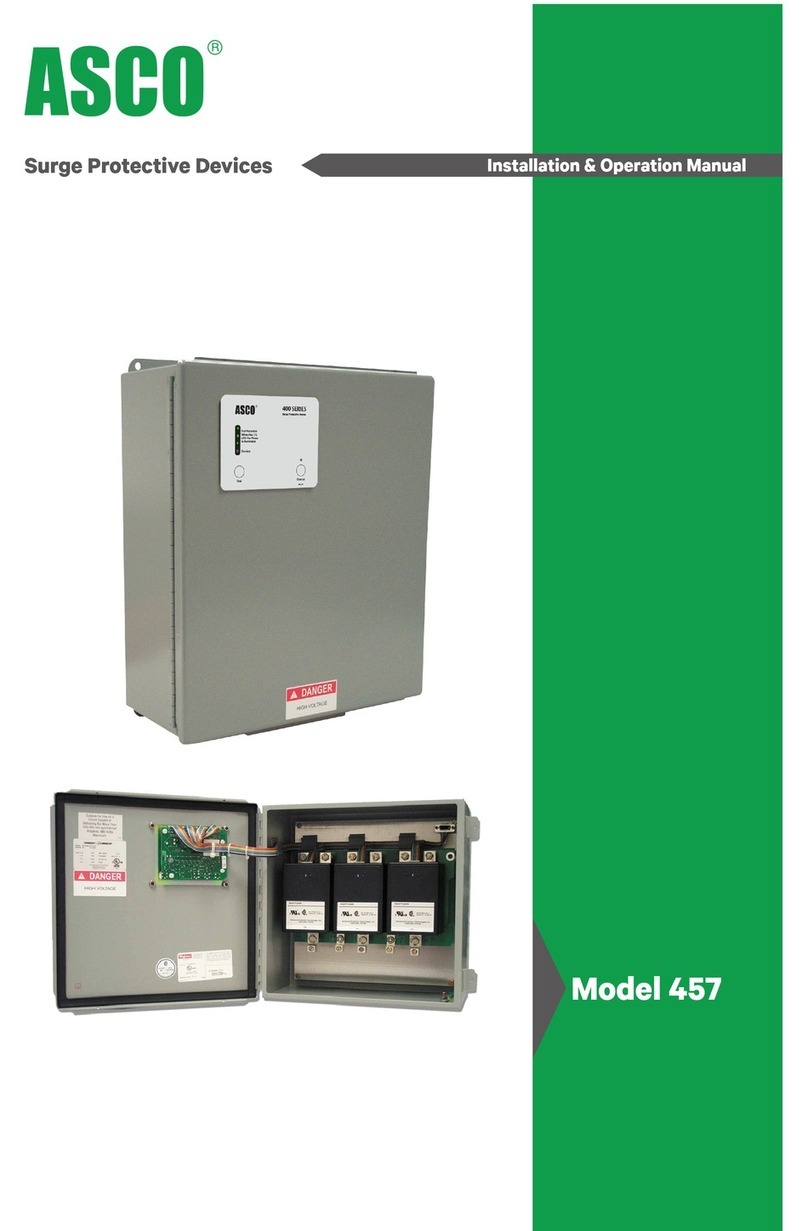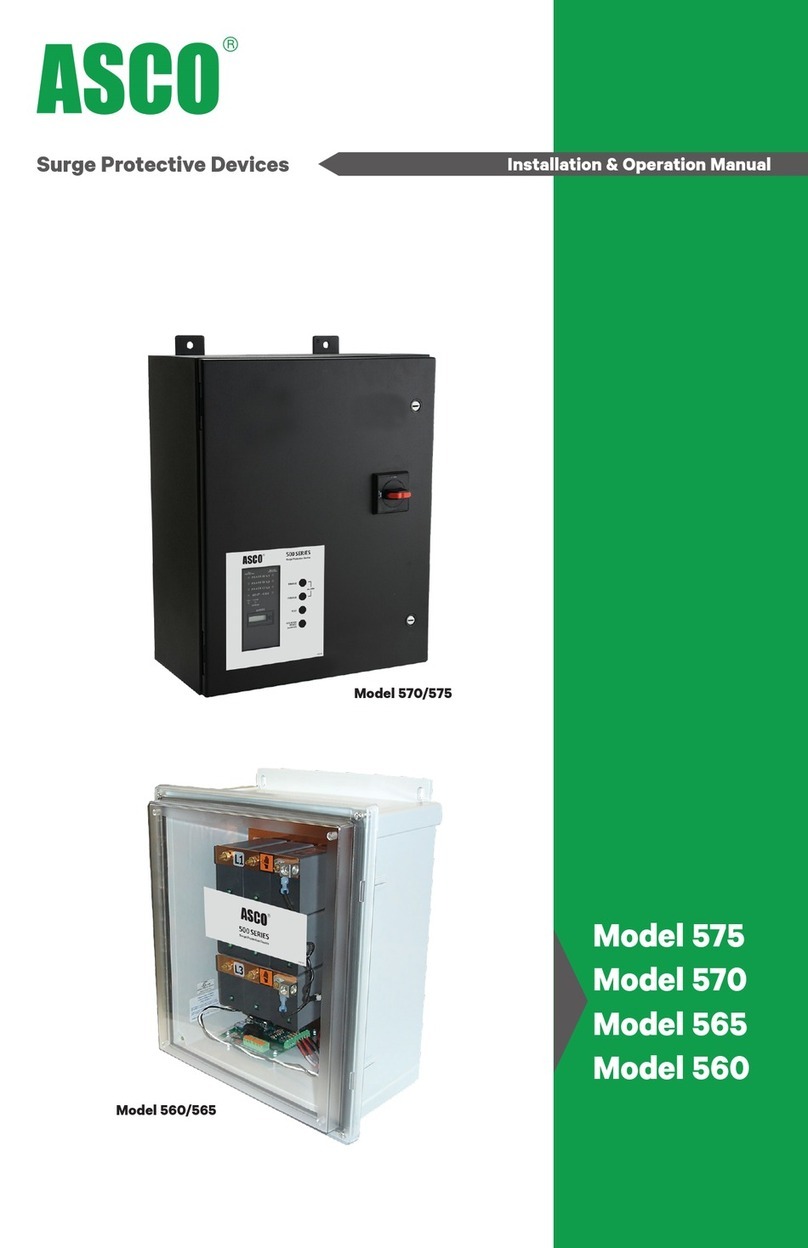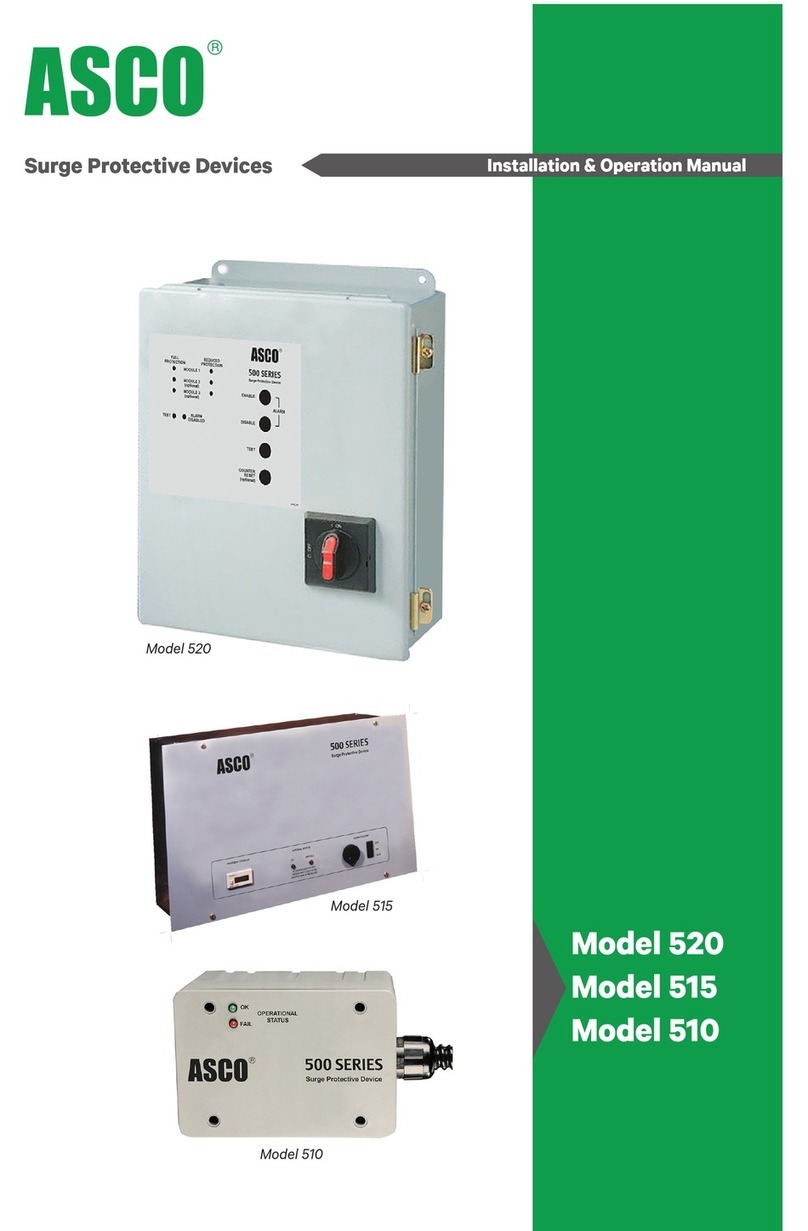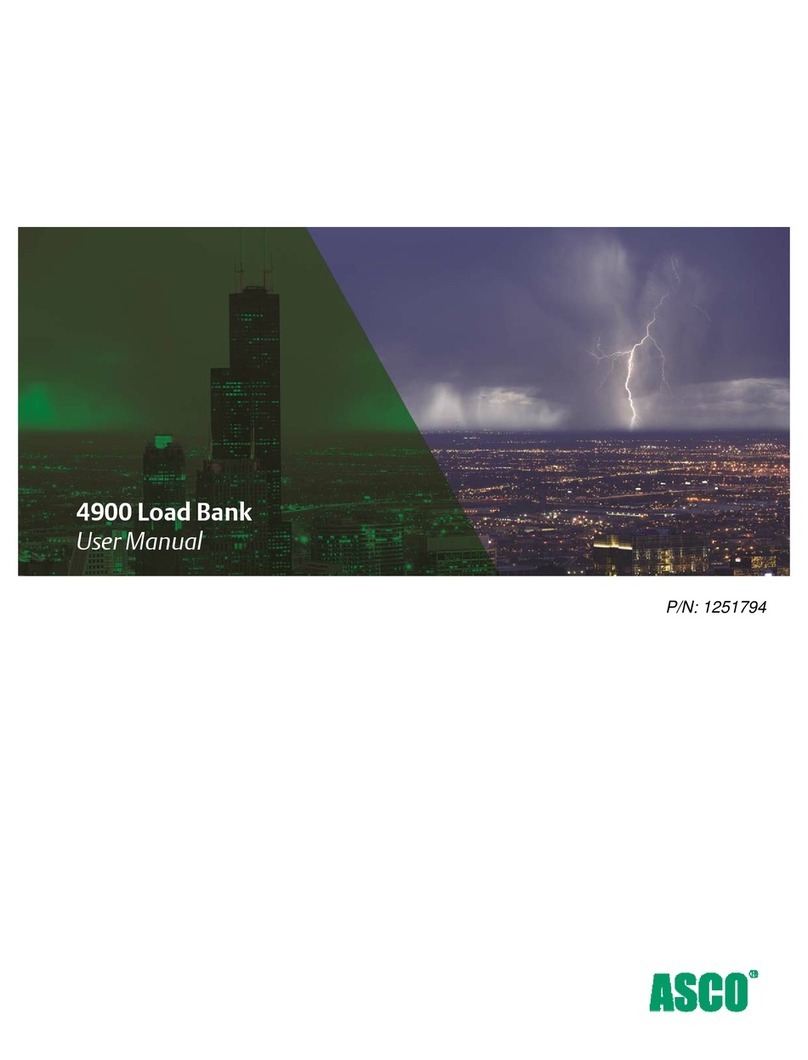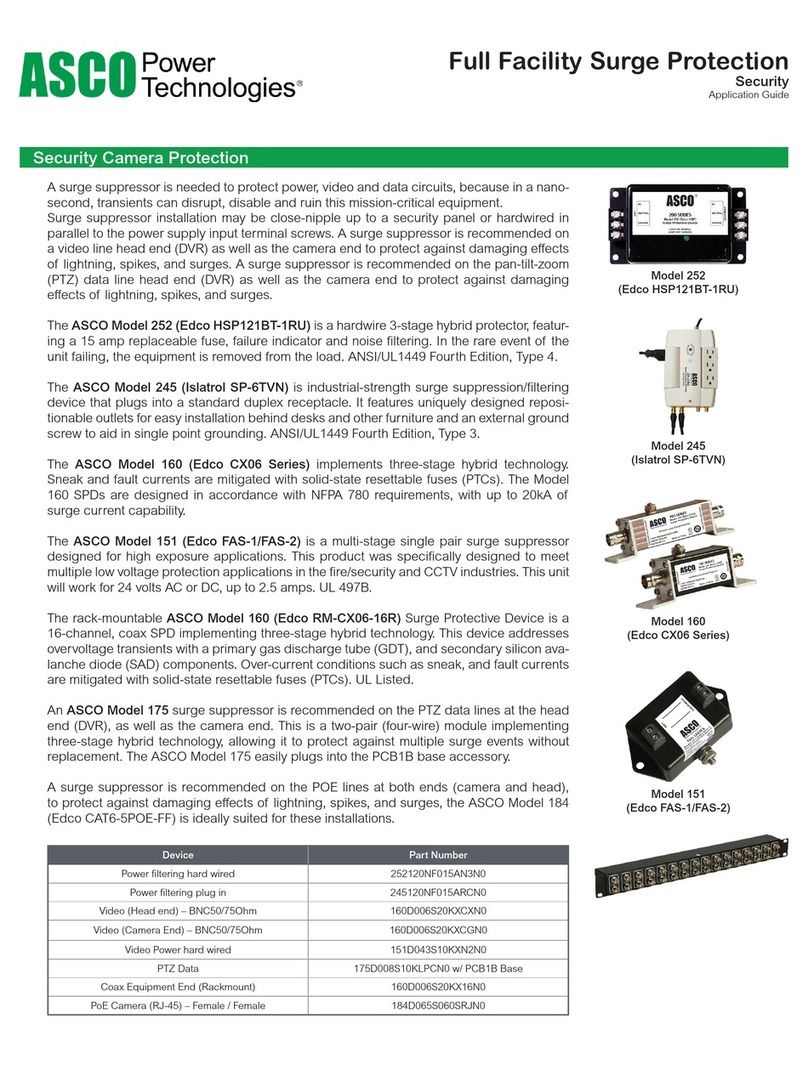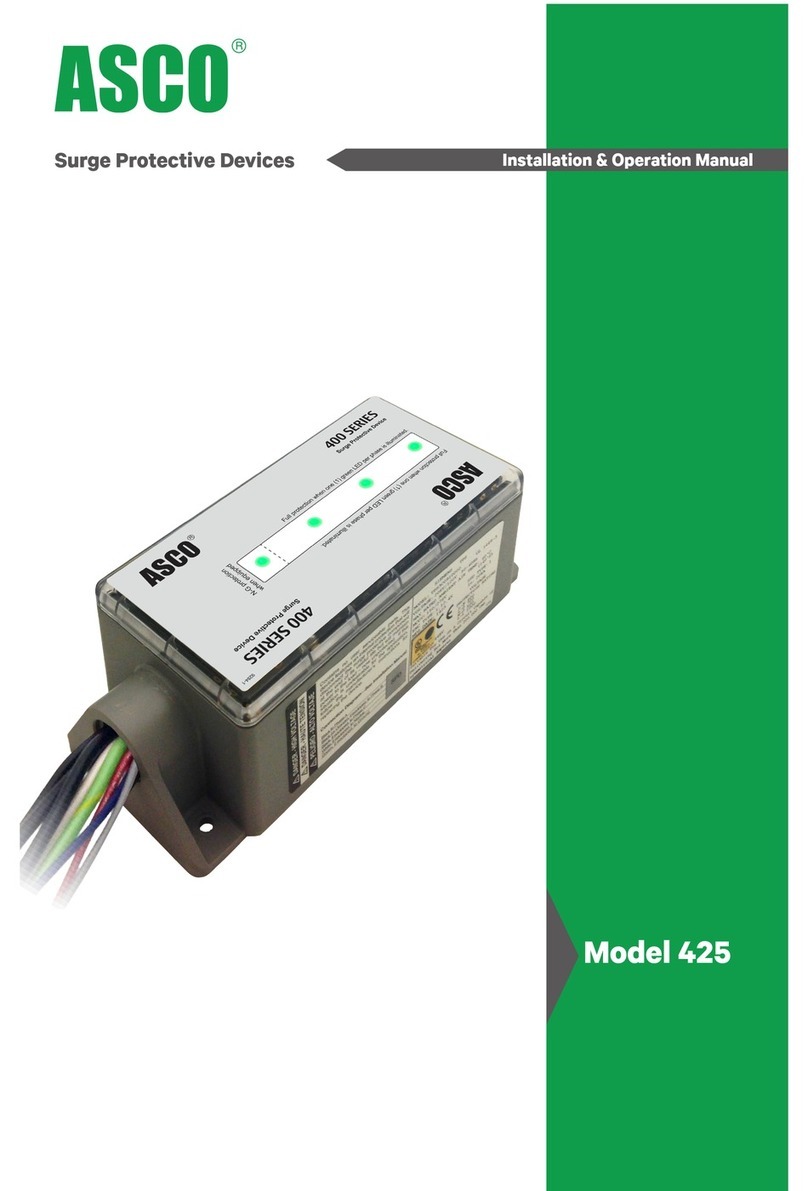Installation, Operation and Maintenance Manual 8221 RevD 08-185
ASCO S50A is a Type 1 SPD. It is suitable for use almost anywhere. Type 1 SPDs are evaluated more
rigorously by UL 1449 for NEC®and CEC compliance. Type 1 SPDs and their connecting leads have
been evaluated by UL and CSA for installation on the line side of the service disconnect where there
is no customer-supplied overcurrent protection. Type 1 SPDs include internal overcurrent protection.
As a generalization, it is more practical to install SPDs on the load side of the main overcurrent device
for maintenance and serviceability reasons. When connected on load side of main disconnect, we
recommend connecting via a 30A circuit breaker due to 10 AWG conductors. The circuit breaker
serves as a disconnect switch and provides NEC®and CEC imposed short circuit protection to the
conductors in Type 2 applications.
Simplified Explanation of Operation: SPDs sense overvoltage and create a momentary low impedance
path to redirect harmful surge energy. They reset automatically and wait for the next surge. This is
similar to the pressure relief valve on a water heater: pressure goes up, valve opens to relieve pressure
and then resets. In an electrical system, an SPD senses overvoltage, reduces impedance temporarily,
which equalizes damaging overvoltages and then resets. SPDs are capable of repeating this function
thousands of times.
Parts List
1 - S50A suppressor including 3’ (~1m) conductors
1 - 3/4” conduit nut
1 - L bracket mounting kit; includes two pan head screws
1 - Data Sheet
1 - Installation Sheet (this document)
Most S50As have demonstrated 200kA & 100kA Short Circuit Current Ratings (SCCR) including leads.
See UL Label markings on SPD or see Data Sheet for specs. Supplemental overcurrent protection
is not required to protect this SPD. However, NEC®and CEC convention requires that connecting
conductors have overcurrent protection in Type 2 applications. Follow applicable codes.
This device features internal overcurrent and overtemperature protection that will disconnect eected
surge suppression components at the end of their useful life, but will maintain power to the load – now
unprotected. If this situation is undesirable for the application, follow these instructions for replacing
the device. The S50A is ultrasonically welded closed and contains no user serviceable parts.
TABLE 1: SPECIFICATIONS
Temperature Operating -40oC (-40oF) to 60oC (+140oF)
Temperature Storage -55oC (-67oF) to 65oC (+149oF)
Wire Size & Installation Torque 10 AWG; 18 inch-pounds
Appropriate Circuit Breaker
based on conductor size
30A (SPD includes internal OCP)
NEMA 250 Enclosure Rating Type 4X with appropriate
sealing & sealing condulets
Voltage Rating & Application
Before installing SPD, verify by nameplate voltage or model number that it has the same voltage
rating as the power distribution system. See attached Data Sheet or call ASCO Tech Support at (800)
727-0669 as appropriate. The SPD’s specifier or user should be familiar with the configuration and
arrangement of the power distribution system. The system is defined by how the secondary windings
of the transformer supplying the service entrance main or load are configured. This includes whether
or not the transformer windings are referenced to earth via a grounding conductor. The system
configuration is not based on how any specific load or equipment is connected to a particular power
distribution system. SPDs should be installed per the distribution system, not per a load or motor’s
wiring connection.






